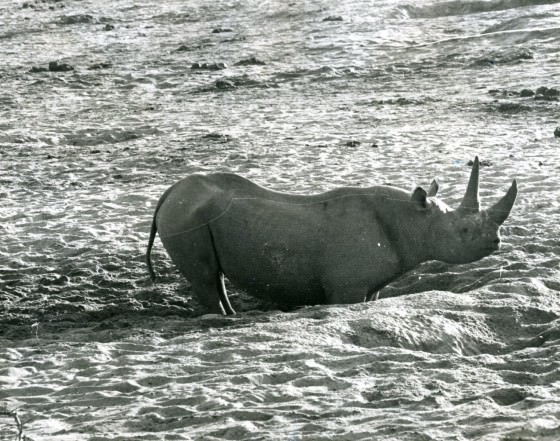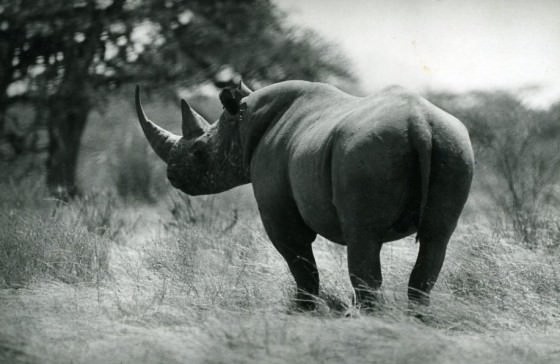On a sunny morning towards the end of 1949, the Founder Warden of Tsavo East National Park, David Sheldrick anxiously awaited the very first visitors to the new Park he had been responsible for creating from the virgin bush of what formerly had been known only as the Taru desert.
A few arterial tracks were now open, carved by hand with sweat and toil out of dense near impenetrable thorny thickets of Commiphora dominated scrubland. In such terrain every plant is barbed with thorns and spikes, so that access had to follow the paths created by the elephants. The first man-made tracks snaked their way past natural waterholes where a visitor might just be lucky enough to spot an animal before it disappeared and if not there, then only should one happen to dash across a road in passing, such was the viewing perspective of Kenya’s largest National Park.


Smart Rangers in belted starched khaki jackets fastened with a gleaming brass buckles stood waiting by the main Voi entrance to the Eastern Section of the Park. In this very hot dry terrain, the Rangers were clad in shorts in those days, and were shod in open sandals to keep their feet cool, their legs protected from thorns and ticks by puttees wound to just below the knee. Kepis hats with a cloth extension protected necks from the sun’s heat and at the front proudly displayed the fledgeling National Park emblem - a rhino against the backdrop of Mt. Kenya in gleaming brass. Wrought iron Entrance Gates also bore the cut-out image of a running rhino with tail aloft for it was the Rhinos that were symbolic of Kenya’s conservation initiative.
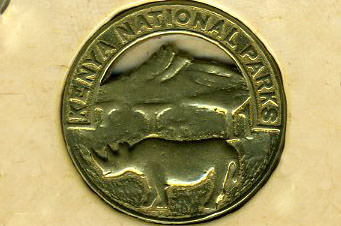
In those days, the fledgeling Tsavo National Park, 8,000 sq. miles in extent, was best known for its ubiquitous rhino population, and also for the country’s largest herds of elephants. Early Hunters and Explorers spoke only of these two species and of Tsavo’s famous man-eating lions that held up construction of the railroad bridge across the Tsavo river at the turn of the Century. The Park had been set aside not because of its wealth of wildlife, (because species other than rhinos and elephants were present only in low numbers), but simply because it was the only empty piece of land unsuitable for anything other than under wildlife. Due to its aridity it was unsuitable for agriculture; infested by tsetse which imparted deadly trypanosomiasis to domestic livestock, but to which the indigenous wildlife was immune with only two permanent rivers to serve this arid land. Exact numbers of rhino within Tsavo were not known in those days. Light aircraft were a novelty in those days, and certainly not at the disposal of the National Park authorities.
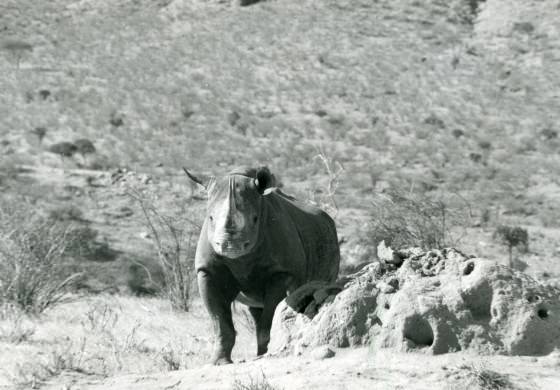
Soon the first car drew up at the Main Entrance to the Park on that day in l949. It was an expensive black Buick driven by an elderly gentleman and his wife, both of whom were already perspiring copiously, even though the day had barely begun. He paid for his ticket – just a few shillings in those days – after which the wrought iron gates were briskly opened by a saluting Ranger to allow him passage. David Sheldrick had asked to be notified should a visitor enter the Park, for he wanted to follow the car track in order to ascertain whether a good time had been had.
David had not gone more than just a couple of miles when the black Buick came hurtling round a corner at speed, screeching to a halt alongside his International Station Wagon. The occupant was clearly furious, red in the face and hot under the collar; his old wife badly shaken, cowering in her seat. The precious Buick had a large jagged hole through one side door and another gaping hole at the back, clearly the work of one of the new Park’s ubiquitous Rhinos!
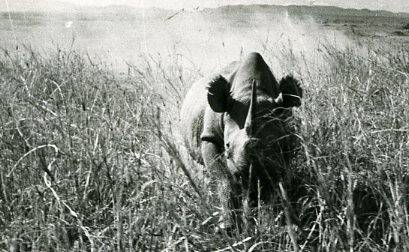
“You should bloody well pay people to come into your Goddamned Park, rather than the other way round”, he bellowed and with that he roared off in a cloud of dust! David radioed the Gate to offer him back his money, at the same time wondering whether his new Park would ever be able to give its visitors an enjoyable experience, rather than the reverse!
In those days Tsavo held the largest population of Black Rhinos in the world – 8,000 strong. I well remember early game drives in the sixties when if one did not see over 20 rhinos in an afternoon, and had been forced to take evasive action on numerous occasions, one would not have had a good game drive. I remember crossing the Yatta on its lava strewn track through dense scrub, and being charged not just by one rhino, but by 3 all at the same time, one coming from the front head on, another from the back and the third from the side. Leaving the road was not an option, so David had no option but run the gauntlet by accelerating while with pounding hearts and a good injection of adrenalin, we all just hoped for the best. It was a very near miss by all three!
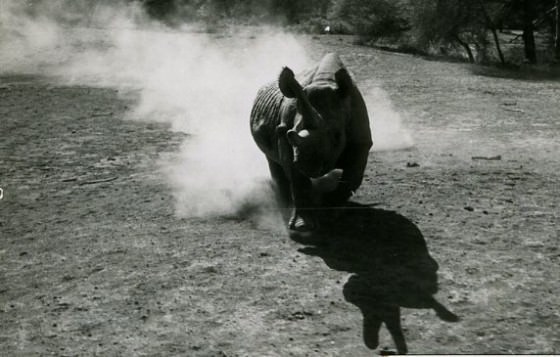
Who would have thought that in my lifetime we would be looking at the annihilation of Rhinos from the earth; that the 5,000 sq. miles of Tsavo East National Park would be able to boast less than the fingers of a hand; while the 3,000 sq. miles of Tsavo West held those that remained under tight security in an electrically fenced Compound. Today, the Continental population of Black Rhinos is less than 3,000, and falling fast, their horns worth five times the price of gold per ounce!
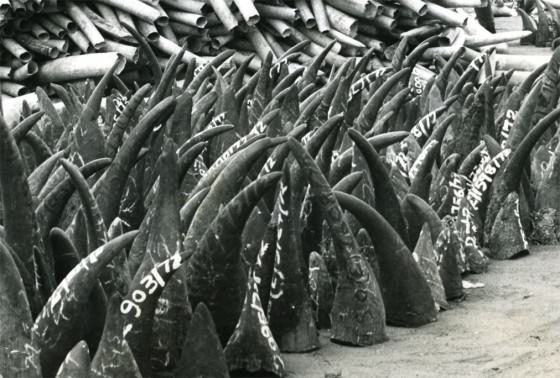
And why? All because of a Far Eastern myth – that the horn of a rhino has magical healing properties to cure eyesight, rheumatism, and even cancer, as well as enhance failing human libidos far better than Viagra! In reality rhino horn is simply keratin - the same substance as a fingernail, so if all the Chinese chewed their nails, they would be ingesting an identical substance. Yet, because of this falsehood, firmly held by the burgeoning human populations of the Far East, rhinos are being driven to the very brink of extinction, despite Scientific proof that it is, in fact, no different to a human fingernail! Who would have believed, driving in Tsavo in the 50’s and 60’s that these iconic animals who in terms of Nature are “perfect”, evolution having seen no good reason to change the model in 60 million years, would be driven to the brink of extinction by a mythical falsehood!
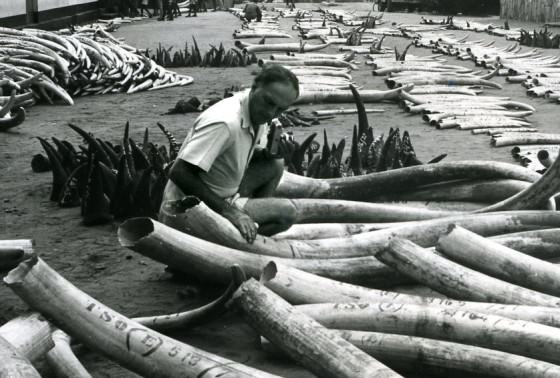
Today, the Tsavo National Park has lost a lot of its previous appeal due to the absence of its Rhinos - the animal that emblazoned the first emblems of the Wildlife Service, and adorned all the first Park Entrance Gates. It is a crying shame and an indictment on the ignorance of Far Eastern people, who are supposed to have been civlilized long before those of Western Nations, that this myth still persists, and that because of it, our grandchildren may well never be able to see a living Rhino in the wild. On this, the World’s Third Rhino Day, pressure must be brought on the Far East to desist from despoiling the Natural World’s iconic inhabitants – the Rhinos and also the Elephants. The world will not forgive such an injustice.
